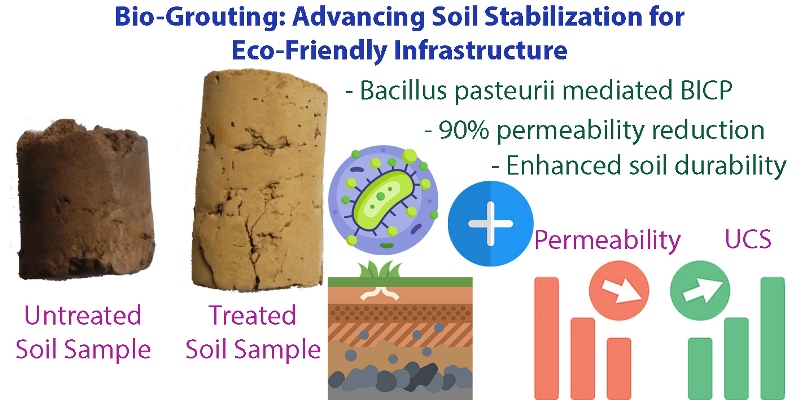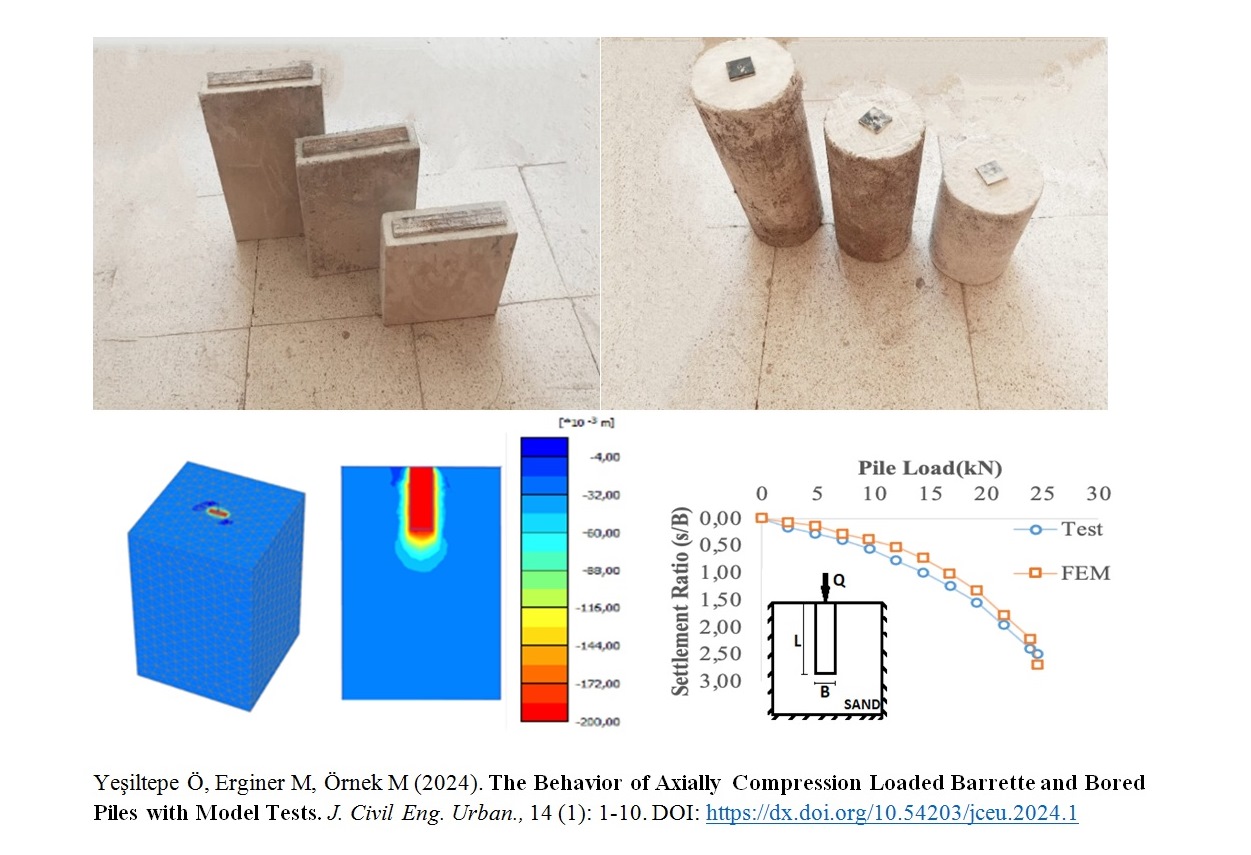Most read content
Partner Journal
<Previous issue | Next issue> | Archive
Volume 14 (1); March 25, 2024
|
|
Research Paper
The Behavior of Axially Compression Loaded Barrette and Bored Piles with Model Tests
Yeşiltepe Ö, Erginer M, Örnek M.
J. Civil Eng. Urban., 14(1): 1-10, 2024; pii:S225204302400001-14
DOI: https://dx.doi.org/10.54203/jceu.2024.1
Abstract
Deep foundations could be preferred instead of shallow foundations in the event that the loads coming from the structure are excessive and the soil state is inconvenient. Rectangular shaped barrette piles are the one of them. In this study, firstly a series of laboratory tests have been conducted using three different sizes of barrette and bored piles placed in the sand soil. Then, finite element based three-dimensional back analyses have been performed using the data obtained from these tests. Afterwards; a series of parametric analyses were performed with different pile geometries, including real pile dimension used in current geotechnical applications. As seen that bored piles are exposed to displacement approximately 2 times more than barrette piles under the same force at all pile lengths. When the pile lengths used in real geotechnical applications are also investigated, it has been determined that bored piles have displacements between 1.5 and 2.3 times more than barrette piles. Numerical results with the piles of small cross-section area show that barrette piles have more bearing capacity compared with bored piles. As the pile length increases, barrette piles could be more loads from 2% up to 17%. When the piles in real geotechnical dimensions are examined, barrette piles have revealed more bearing capacity performance from 7% to 49% when compared to bored piles as the pile length increases. It also has been revealed that barrette piles show better performance than bored piles both in experimental and numerical analyses.
Keywords: Barrette pile, bored pile, sand, model test, numerical analysis
[Full text-PDF] [Crossref Metadata] [Export from ePrints]
|
|
Research Paper
Bio-Grouting: Advancing Soil Stabilization for Eco-Friendly Infrastructure
Firoozi AA and Firoozi AA.
J. Civil Eng. Urban., 14(1):12-20, 2024; pii:S225204302400002-14
 DOI: https://dx.doi.org/10.54203/jceu.2024.2
DOI: https://dx.doi.org/10.54203/jceu.2024.2
Abstract
The burgeoning demand for sustainable infrastructure necessitates the adoption of innovative soil stabilization techniques that are both effective and environmentally benign. This study introduces bio-grouting, a novel approach utilizing biologically induced calcite precipitation (BICP) mediated by Bacillus pasteurii, to enhance soil strength and durability. By incorporating naturally occurring soil bacteria, bio-grouting not only improves soil mechanical properties but also significantly reduces permeability, thereby extending the longevity of infrastructure and minimizing environmental impacts. Extensive laboratory tests and field trials demonstrate that bio-grouting provides substantial improvements in unconfined compressive strength (UCS) and decreases soil permeability by up to 90% across various soil types, including sandy loam, clay, and silty sand. Moreover, durability tests under environmental stresses confirm the treated soil’s resilience, underscoring bio-grouting’s potential as a sustainable and scalable solution for geotechnical engineering applications.
Keywords: Bio-grouting, Soil Stabilization, Biologically Induced Calcite Precipitation, Sustainable Infrastructure, Bacillus pasteurii, Geotechnical Engineering.
[Full text-PDF] [Crossref Metadata] [Export from ePrints]
|
|
Research Paper
Regression Analysis of Concrete Produced from Selected Wastewater Types
Akintola LO and Ojo OM.
J. Civil Eng. Urban., 14(1): 21-29, 2024; pii:S225204302400003-14
 DOI: https://dx.doi.org/10.54203/jceu.2024.3
DOI: https://dx.doi.org/10.54203/jceu.2024.3
Abstract
This study investigates the effects of using various wastewater types on the strength characteristics of concrete through regression analysis. Given the construction industry's substantial freshwater consumption and the increasing scarcity of potable water, the research explores the viability of substituting wastewater in concrete production. Materials tested include cement, aggregates, and wastewater from kitchen, laundry, fish-pond, and paint industry, alongside potable water for control. Comprehensive tests on these materials, including physical, chemical, and bacteriological assessments, preceded the concrete mixing and casting process. The study involved curing concrete specimens and performing compressive and tensile strength tests at intervals of 7, 14, 21, and 28 days. Results indicated that while concrete made with potable water exhibited superior performance, wastewaters significantly influenced the mechanical properties of concrete, with potable water achieving the highest compressive and tensile strengths. Regression analysis confirmed a substantial impact of curing duration on strength development. The research concludes that water quality is crucial for concrete performance and suggests potable water for optimal strength, though wastewaters present a potential alternative, highlighting the need for further evaluation and adherence to quality standards.
Keywords: Wastewater, Concrete, Compressive and tensile strength, Regression analysis.
[Full text-PDF] [Crossref Metadata] [Export from ePrints]
<Previous issue | Next issue> | Archive
This work is licensed under a Creative Commons Attribution 4.0 International License (CC BY 4.0)![]()




